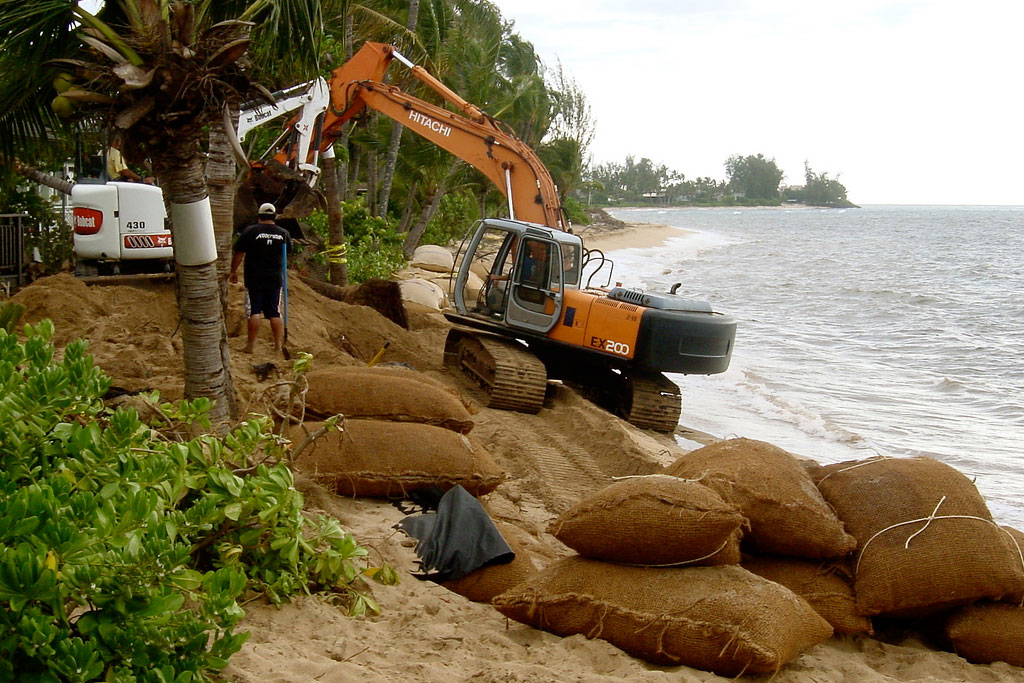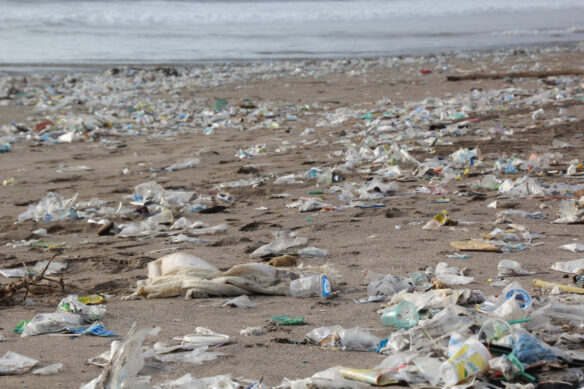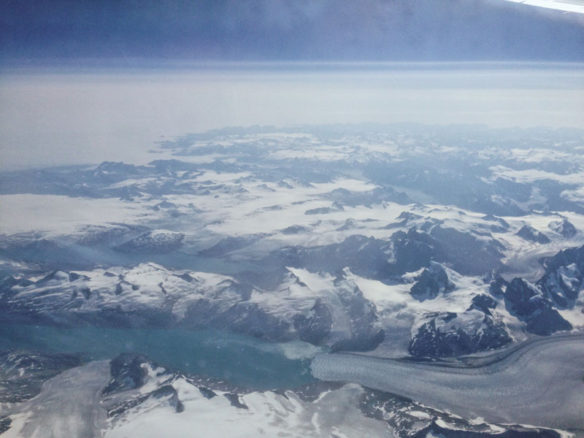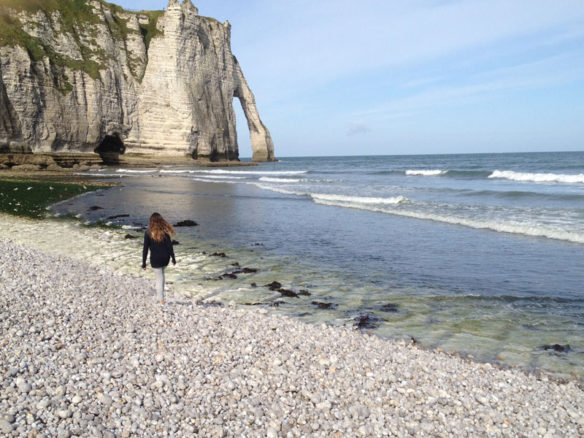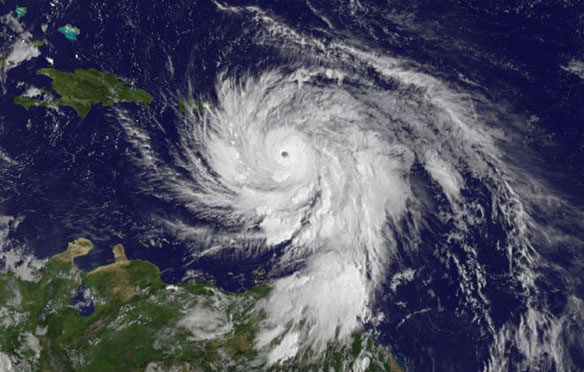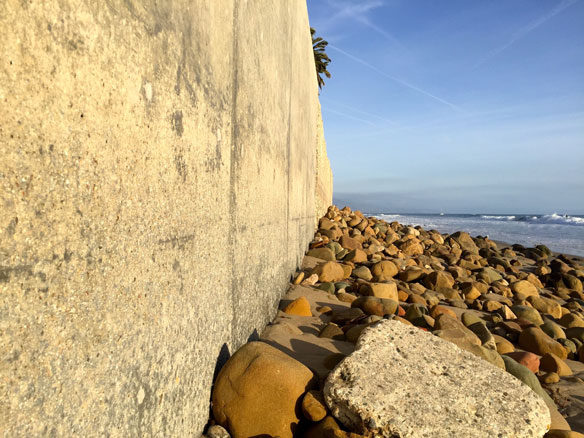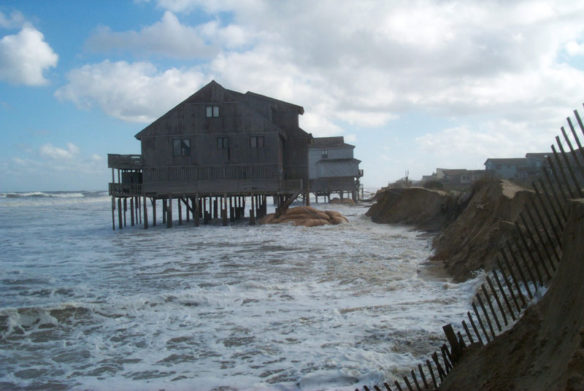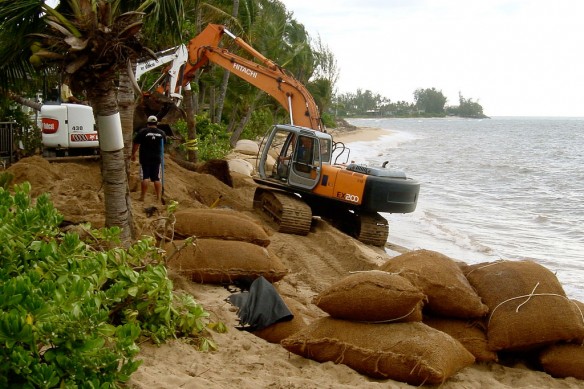
Coastal erosion, Hawaii. “Sandbagging is pretty much an exercise in futility. The only benefit is psychological, the feeling of doing something…” Captions and Photo source: ©© Davidd
Excerpts;
A fresh round of repairs to Hawaii’s most famous beach have been completed ― and engineers hope their latest idea will do more to help the shoreline from washing away.
Over the last three weeks, and at a cost of roughly $700,000, engineers worked to install a 95-foot sandbag groin at Waikiki Beach, along with hauling in tons of new sand to help replenish it…
Read Full Article; Hawaii News (11-29-2019)
‘Sand mattress’ technology to combat Mother Nature at Kuhio Beach; KHON News (12-17-2017)
Waikiki Beach Is Totally Man-Made And Disappearing. Can Hawaii Save It?Huffington Green (03-10-2015)
Doubling of Coastal Erosion by Mid-Century in Hawai’i, Science Daily (03-24-2015)
Chronic erosion dominates the sandy beaches of Hawai’i, causing beach loss as it damages homes, infrastructure, and critical habitat. Researchers have long understood that global sea level rise will affect the rate of coastal erosion. However, new research indicates that coastal erosion of Hawai’i’s beaches may double by mid-century…
Terminal Groins Don’t Stop Erosion; Coastal Review (05-03-2016)
The Negative Impacts Of Groins, (02-12-2009)
The negative impact of groins on downdrift shorelines is well understood. When a groin works as intended, sand moving along the beach in the so-called downdrift direction is trapped on the updrift side of the groin, causing a sand deficit and increasing erosion rates on the downdrift side. This well-documented and unquestioned impact is widely cited in the engineering and geologic literature.
Seawalls: Ecological effects of coastal armoring in soft sediment environments; Science Daily (07-24-2017)
For nearly a century, America’s coasts — particularly those with large urban populations — have been armored with human made structures such as seawalls. These structures essentially draw a line in the sand that constrains the ability of the shoreline to respond to changes in sea level and other dynamic coastal processes…
“Seawalls Kill Beaches,” Open Letters by Warner Chabot And Rob Young; (10-03-2014)
Living on the shores of Hawaii: natural hazards, the environment, and our communities, A book by Chip Fletcher; Robynne Boyd, William J. Neal and Virginia Tice.
“Living on the shores of Hawaii: natural hazards, the environment, and our communities” addresses a wide range of environmental concerns within the context of sustainability and their influence on the future of Hawaii…
Sandbagging at the Shore: North Carolina’s Coastal Sand Bags and Political Sandbaggers; By William Neal, Orrin Pilkey & Norma Longo;
The wonder of modern English is how social use of language expands and changes the meaning of words. Sand bag is a bag filled with sand used for temporary construction—quickly made, easily transported, and easily removed. Typically, sandbagging is the emplacement of sand bags to construct a temporary protective wall or barrier, such as a dike or dam to hold back flood waters, or protection on the battlefield. But the term ‘sandbagging’ has taken on an array of other meanings…
Rethinking Living Shorelines, By Orrin H. Pilkey, Rob Young, Norma Longo, and Andy Coburn;Program for the Study of Developed Shorelines / Western Carolina University, March 1, 2012, Nicholas School of the Environment, Duke University
In response to the detrimental environmental impacts caused by traditional erosion control structures, environmental groups, state and federal resource management agencies, now advocate an approach known as “Living Shorelines”that embraces the use of natural habitat elements such as indigenous vegetation, to stabilize and protect eroding shorelines.
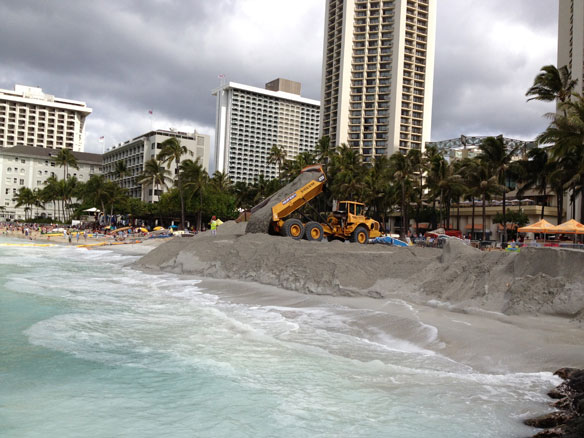
Waikiki beach-renourishement, 2012. Photograph: © SAF — Coastal Care.
“Hawaii’s famed Waikiki Beach started to erode again, less than a year after the completion of a $2.2 million project to replenish the sand on about 1,730 feet of shoreline that had been suffering from chronic erosion.”
“Development is absolutely responsible for the majority of the beach nourishment,” Andrew Coburn, assistant director of The Program for the Study of Developed Shorelines at Western Carolina University, said. “Well over 99 percent of the shorelines that are nourished are developed so there is some economic value placed behind them.”

